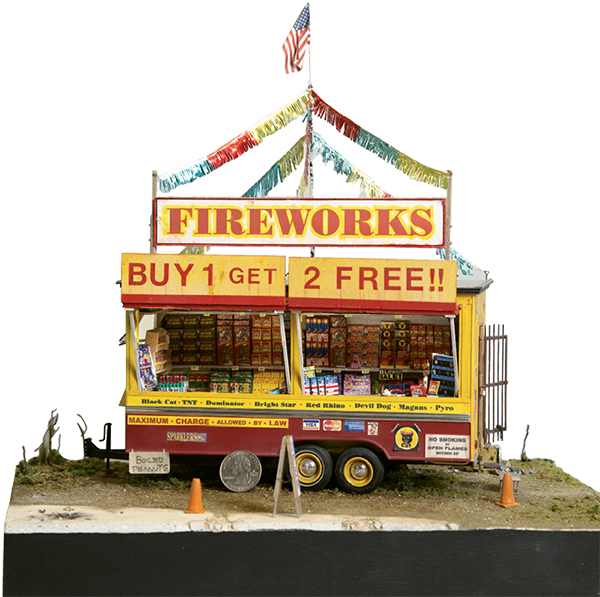Miniature artist Ken Hamilton makes a huge deal of tiny things

“I have drawers and drawers filled with little things!“ says Ken Hamilton, who uses magnifiers, tweezers, forceps, and dental tools to build his elaborate miniature constructions.
Look closely—that chainlink fence is made from a bridal veil; those waves are paper towels; the pile of rocks is actually crushed eggshell. Ken Hamilton has a knack for using everyday objects to construct his miniature models. For him, the art form began as a childhood hobby. He went on to study fine art at the University of Pennsylvania and the Pennsylvania Academy of Fine Arts, though he decided to go the practical route with a career in environmental remediation. His work was exhibited at a few galleries in Philadelphia, but it wasn’t until after retiring in 2013 that he began creating full time; he moved to Charleston the following year. Now, the prolific retiree is a resident artist at the Lowcountry Artists Gallery and often recreates ordinary buildings that one may not initially classify as beautiful. According to Hamilton, this is just the beginning.
Early start: I’ve been building models since I was a kid. I have a photo of me at eight years old sitting at the family table with a paintbrush in hand, building a model of the Queen Mary, which was a very popular kit at the time.
Mini materials: I try to match what things are made of in real life as much as possible. I cut roof shingles from sandpaper for the Lowcountry Seafood building, and I wove carpet threads together to create sweetgrass baskets for the sweetgrass shack. Sometimes I have to use other materials. To make waves for the Hunting Island piece, I soaked paper towels in plaster, added color, and created breakers with poly fiber stuffing from pillows.

A dime gives a sense of scale to Hamilton‘s fireworks stand.
The details: The fun part starts when the basic structure is done, and it takes on a life of its own. As I add details, I create stories in my head, thinking about what could have happened there. For example, the upstairs resident of my Charleston single is a gardener, so there are tons of potted plants. I like implying a sense of the past, present, and even future in the details.
Zooming in: I create pieces that are a slice of a larger scene, like the Shop & Save replica, which just shows a section of the storefront. It suggests that there’s more going on beyond what you see.
Finding inspiration: I build what catches my eye. For the sweetgrass shack, I was on my way to dinner and running early, so I was driving up and down Highway 17—then I saw it.
Art you can touch: Occasionally I have to repair things because people come around poking at them. Some people have asked me to enclose my pieces in plexiglass, but I hate to do that. It acts as a barrier to someone experiencing the piece. I’d rather repair it.
Other activities: When I’m not building, I write a tips and tech column for a magazine called Scale Auto—I’m like the “Dear Abby” for model car builders.